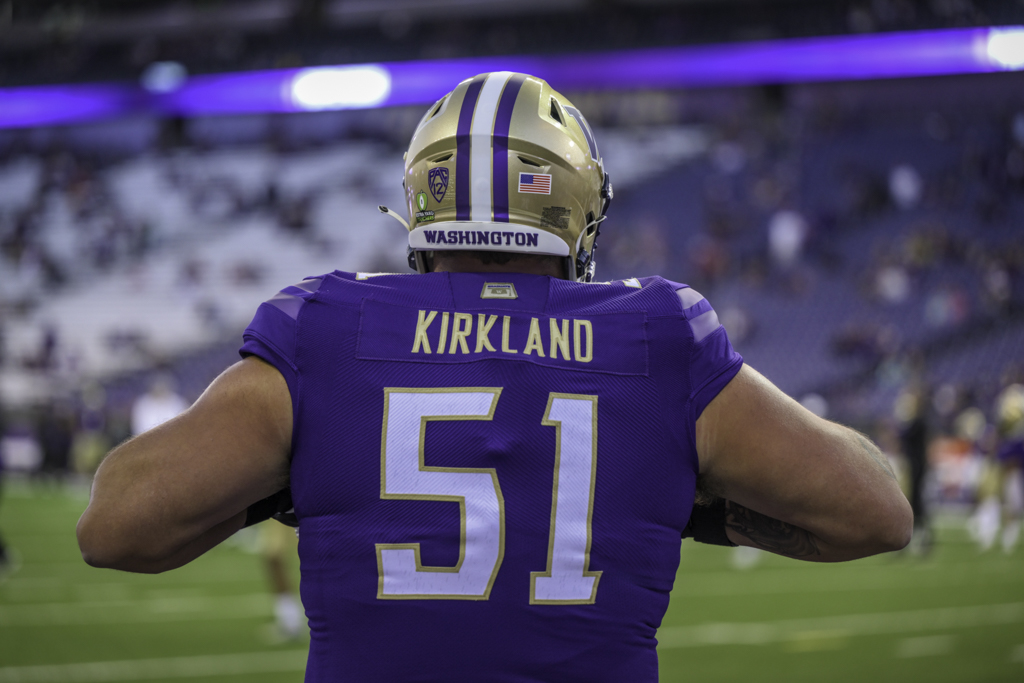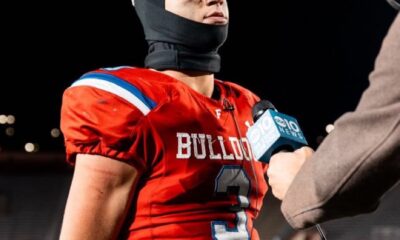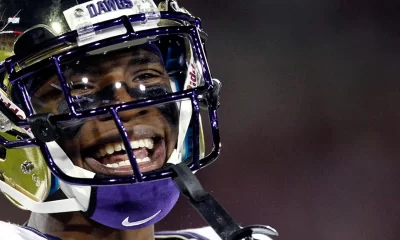RealDawg.com continues its 2022 season recap series of “Expectation versus Reality”. We’ve already looked at how Washington’s ground game bested all expectations. Then we looked at Tight Ends, noting their down marker-moving abilities. After that, we looked at one of the nation’s top passing offenses. Staying on the offensive side of the ball the latest edition examines the turnaround of Washington’s offensive line.
Given the talent-rich playmakers on offense, expectations were high in 2021 for Washington. However, they greatly underperformed largely because of an offensive scheme that strayed from its strengths.
The Washington Huskies came into the 2021 season with a highly touted offensive line that wasn’t just supposed to be the best in the conference but was considered one of the top position groups in the country.
The sad fact was that the offensive line vastly underperformed for the Jimmy Lake/John Donovan-designed offense. From left-to-right, the starters were Jaxson Kirkland, Julius Buelow, Luke Wattenberg, Henry Bainivalu, and Victor Curne. It was a monstrous line who were expected to blast wide-open holes for the running backs.
In reality, the offensive linemen were too big. The burst and athletic ability that made these players so valuable had been hampered by too much bulk. The result was a slow-moving line that had a hard time in both run blocking and pass protection.
Combine that with the loss of Jaxson Kirkland and the result was dreadful. Dylan Morris was consistently under duress and the running game averaged a miserable 3.3 yards per carry.
Expectation: Offensive line coach Scott Huff was the only coach to make the transition from Lake to DeBoer staff. Each player along the line dropped weight in the room McKeefery strength and conditioning system. Ulumoo Ale was moved to the defensive side of the ball, Kirkland came back as the left guard, and new starters were put on the line. Troy Fautanu started at left tackle, Cory Luciano at center, and Roger Rosengarten at right tackle.
Most thought the offensive line could take a step forward strictly because the talent around them was better, but still, most of the question marks in the off-season revolved around this unit. Right guard, Rosengarten was assigned to the lefty Penix’s blind side. Quite the assignment for a freshman and many bumpy roads were envisioned. Moving Luciano to center, after bouncing around early in his Husky career seemed a tad risky.
Reality: There were some good offensive lines in the conference and around the country. Returning to the line’s strengths was the foundation of what helped Washington turn around so quickly. In fact, there was some mixing and matching that needed to be done.
Luciano anchored the line at center where he started all 13 games. Against Oregon, he was awarded the conference’s lineman of the week as the Huskies won in Eugene. Rosengarten was a revelation, taking home freshman All-American honors from College Football News.
Fautanu began the season at left tackle but was moved to left guard for one game when Jaxson Kirkland returned to the lineup at left guard. In the left guard position for the first 3 games of the season before finally settling in a backup role at left guard as Kirkland worked himself into game shape. Kirkland and Fautanu swapped spots for the remaining 9 games of the season. Henry Bainivalu was a season-long fixture at right guard, earning offensive lineman of the week for the Huskies’ win in Pullman.
A tough decision was made by moving Kirkland to the interior of the line. He dropped his weight from 340 to a more athletic 310 as Washington’s line was settled for the final 9 games of the season. When Kirkland announced that he was coming back for another year the expectation was that he’d be the team’s left tackle. However, DeBoer wanted Fautanu’s athleticism at left guard.
While the Huskies lost the first two games with the lineup set with Fautanu at LT; Kirkland at LG; Luciano at C; Bainivalu at RG; Rosengarten at RT but then the line gelled as the Huskies won the final 7 games, scoring an average of 39 points a game.
This group were expert communicators and were nearly flawless in pass protection all season. Quarterback Michael Penix was rarely harassed by opposing defenses which allowed him to pick apart defenses. Penix was sacked 5 times all season on 554 attempts, a 0.9-percent sack rate. However, he was sacked twice on 310 passes in Washington’s final 9 games–an unbelievable 0.65-percent sack rate.
Their protection led to the most prolific passing season in Washington history as Penix’s 4,641 passing broke Cody Pickett’s 20-year-old record. With so much attention given to UW’s passing offense, the rushing offense actually scored one more TD than it did through the air (33 rushing, 32 passing). That speaks to Washington’s ability open holes. The Huskies finished in the top 15 in both rushing (15th) and passing (13th) TDs.
Offensively 12th in the nation at 12.89 yards per completion among Power 5 schools. Additionally, Wayne Taulapapa finished 11th in the nation with an average of 6.34 yards per carry among Power 5 running backs.
It gets better: The Huskies led the nation in tackles for loss given up with just 31; third down conversion percentage at 57-percent; and fewest fumbles with 2. They finished second in the country with just 7 sacks given up (five were to starter Penix); 5th in total first downs; and 9th in fewest turnovers lost.
In all, the Washington offensive line was who we thought they were in 2021: one of the best in the country.
Expectation VS Reality Grade: A+
Overall Position Grade: A+











